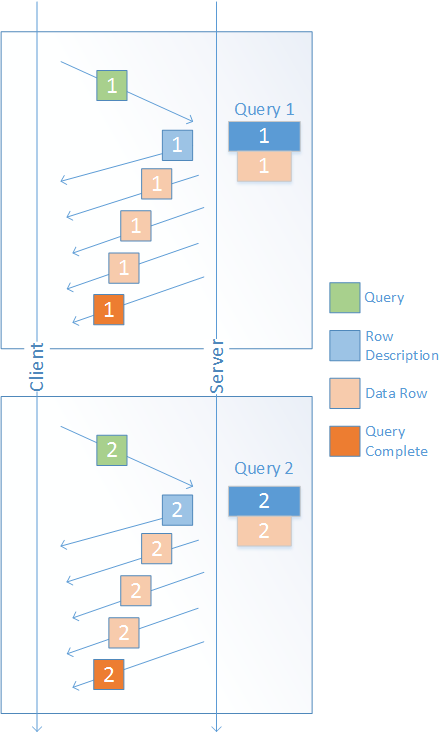ResultBufferSize
By default, Vertica uses the ResultBufferSize parameter to determine the maximum size (in bytes) of a result set that a client can retrieve from a server. When ResultBufferSize is enabled, Vertica sends rows of data directly to the client making the query. The number of rows returned to the client at each fetch of data depends on the size (in bytes) of the ResultBufferSize parameter.
Sometimes, the size of the result set requested by the client is greater than what the ResultBufferSize parameter allows. In such cases, Vertica retrieves only a portion of the result set at a time. Each fetch of data returns the amount of data equal to the size set by the ResultBufferSize parameter. Ultimately, as the client iterates over the individual fetches of data, the entire result set is returned.
Benefits of ResultBufferSize
If you are concerned with the effect of your queries on network latency, ResultBufferSize may provide an advantage over MARS. MARS requires that the client wait until all rows of data are written to the server before the client can retrieve the data. This delay may cause latency issues for your network while waiting for the results to be stored.
In addition, MARS requires that you send two separate requests to return rows of data. The first request performs the query execution which stores the result set on the server. The second request retrieves the data rows that are stored on the server. With ResultBufferSize, you only need to send one request. This request both executes and retrieves the data rows of interest.
Query Execution with ResultBufferSize
The following graphic shows how Vertica returns rows of data from a database to the client with ResultBufferSize enabled:

The query execution performs the following steps:
- The client sends a query, such as a SELECT statement, to the server. In the preceding graphic, the first query is named Query 1.
- The server receives the client's request and begins to send both a description of the result set and the requested rows of data back to the client.
- After all possible rows are returned to the client, the execution is complete. The size of the data set returned equals either that of the data that was requested or the maximum amount of data that ResultBufferSize parameter can retrieve. If the ResultBufferSize maximum size is not yet reached, Vertica can execute Query 2.
The server can accept Query 2 and perform the same steps that it did for Query 1. If the results for Query 1 had reached the maximum ResultBufferSize allowable, Vertica could not execute Query 2 until the client freed the results from Query 1.
After Query 2 runs, you cannot view the results you retrieved for Query 1, unless you execute Query 1 again.
Setting an Unlimited Buffer Size
Setting ResultBufferSize to 0 tells the client driver to use an unlimited result set buffer. With this setting, the client library allocates as much memory as it needs to read the entire result set of a query. You may choose to set ResultBufferSize to 0 of you want to simulate having multiple active queries over a single database connection at the same time. With an unlimited buffer size, your client can run a query and have its entire result set stored in memory. This ends the first query, so your client can execute a second query before it fully processes the results of the first query.
A drawback of this method is that your query may consume too much memory if your queries return large result sets. This over-allocation of memory can result in the operating system terminating your client. Due to this risk, consider using multiple database connections instead of trying to reuse a single connection for multiple queries. The overhead of multiple database connections is small compared to the overall amount of resources required to process a large data set.